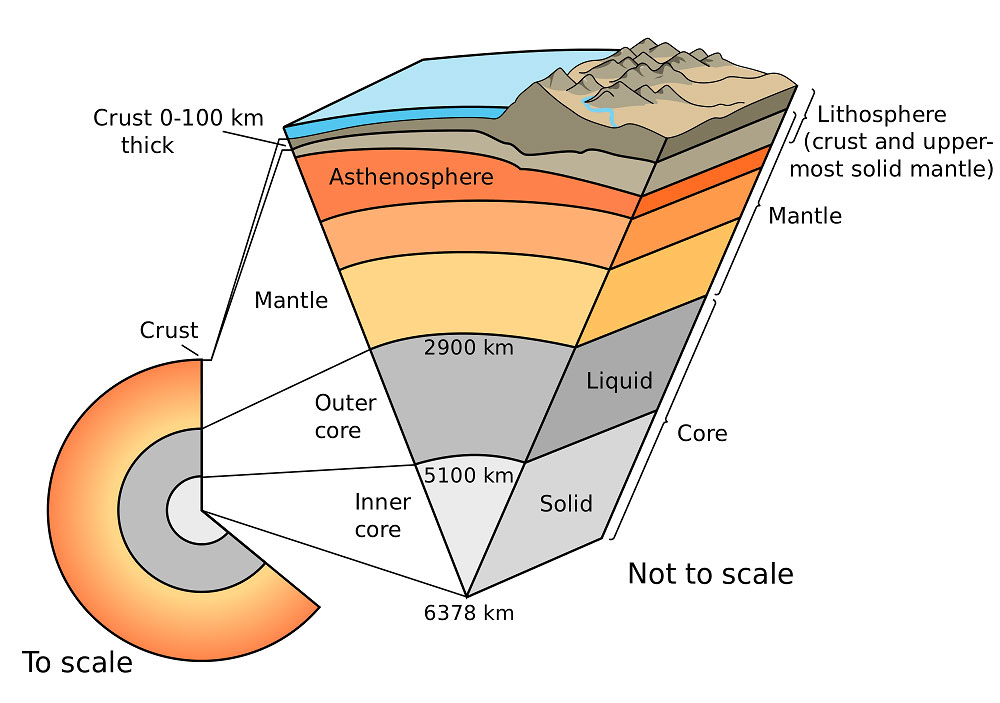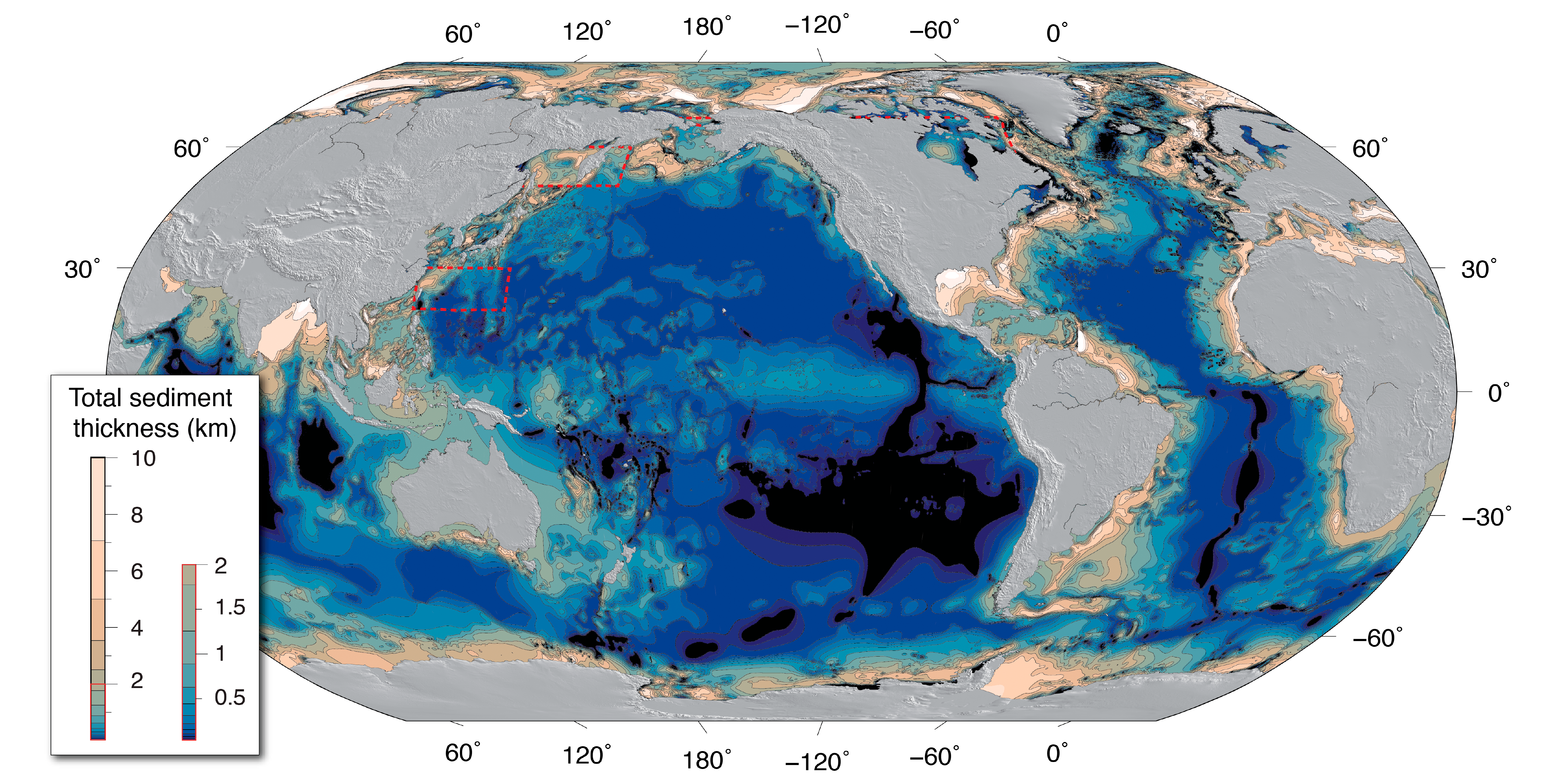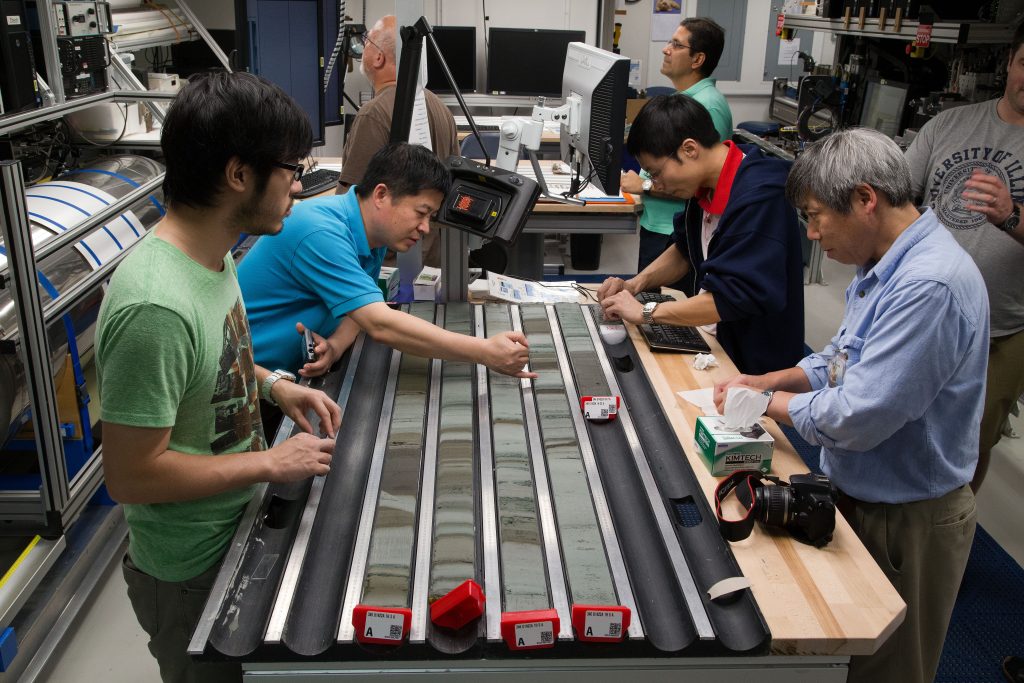1.2 Sediment and the Subsurface

The process of scientific ocean drilling allows us to gain access to environments that would otherwise be a challenge to gather data and samples. Sediment, rock, fluids, and living organisms from below the seafloor have all been collected during these drilling expeditions. Before going into the techniques and technologies for recovering these materials and their scientific significance, we provide a brief review of Earth’s internal layers and the sediment that is found on top of the ocean crust.
Layers of the Earth
If one views Planet Earth in a cross-section, there are different ways to define the internal layers – either by chemical composition (crust, mantle, and core – see ScienceNewsExplores) or by physical characteristics (due to pressure and temperature changes). The animation below describes how Earth’s layers were discovered, what the layers are, and how the crust differs from the tectonic (lithospheric) plates.
This BBC video is a quick animation that starts on the surface of the Earth and goes down to the core.
Note the part in the video (starting at 1:34) that mentioned the attempt to drill into to the Earth’s mantle layer. That project, named Project Mohole, marks the beginning of scientific ocean drilling and is described later in this book.
Did you know… The boundary between the crust and mantle layers is known as the Mohorovičić discontinuity, also known as the Moho. At this boundary, there is a discrete jump in the velocity of seismic waves (a seismic discontinuity) and a change in chemical composition between Earth’s crust and mantle. Croatian geophysicist Andrija Mohorovičić is credited with determining the boundary in 1909 when observing seismograms from earthquakes.
Marine Sediment
As a reminder, the ocean crust is formed from seafloor spreading at divergent plate boundaries (see Geology of the Oceanic Crust). But the ocean floor is not just an expansive field of basaltic crust that forms at divergent plate boundaries. There are layers of marine sediments distributed across all ocean basins of varying thickness. Scientific ocean drilling expeditions have the ability to collect continuous cores of sediment layers that lie on top of oceanic crustal material. That sediment records the paleoenvironmental and depositional record in connection to a geographic location over geologic time.
According to NOAA, the distribution of sediments in the oceans is controlled by five primary factors:
- Age of the underlying crust
- Tectonic history of the ocean crust
- Structural trends in basement
- Nature and location of sediment source, and
- Nature of the sedimentary processes delivering sediments to depocenters

Where do these marine sediments come from? You are encouraged to visit Introduction to Oceanography (Webb) and Principles of Earth Science (Solada and Daniels) for a detailed discussion on the four sources of marine sediments:
- Lithogenous sediments are derived from preexisting rock. They are also called terrigenous sediments since most of it comes from the land masses and makes its way into the ocean via rivers, ice, wind, or other processes. Lithogenous sediment tends to dominate near the edges of continents and islands due to heavy contributions form land-based sediment sources relative to other sediment sources.
- Biogenous sediments are composed of the remains of marine organisms, such as plankton when their exoskeletons break down. Biogenous sediment may often dominate in deeper ocean areas because the relative contributions of other sediment sources are less in comparison to the biological-based sediment sources. And biogenous sediments also commonly occur in near shore areas, and may predominate in many shallow areas of tropical oceans.
- Hydrogenous sediments are formed through a chemical process when materials that are dissolved in water precipitate out and form solid particles. Hydrogenous sediments make up only a small portion (less than 1%) of ocean sediments.
- Cosmogenous sediments are derived from extraterrestrial sources, filtering in through the atmosphere or carried to Earth on meteorites. Cosmogenous sediments are the least abundant of all sediment types.
Exercise : What Can We Learn from Marine Sediment?

Read this article published by Boston University which discusses the time JOIDES Resolution spent collecting material in the Sea of Japan (Expedition 346, Asian Monsoon). Then, think about how you would respond to the following questions:
Article: The Future, Buried in the Deep, by Jeremy Schwab
a) What can scientists learn from studying sediments from this geographic region?
b) How can this information be applied to societal concerns now and in the future?

